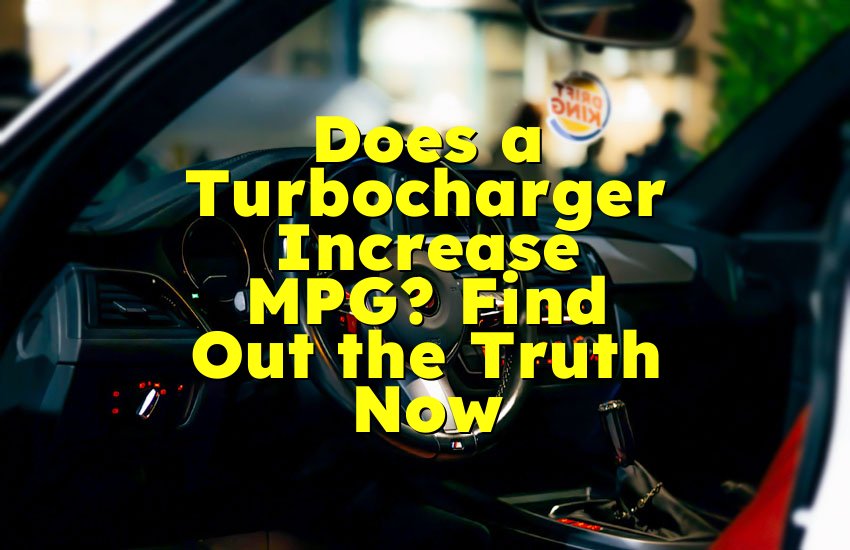As an Amazon Associate, I earn from qualifying purchases at no extra cost to you.
How to Test for a Clogged Fuel Injector and Fix It Easily (6 Steps)
You are driving and your car starts shaking, losing power, or even stalling for no clear reason. You feel stressed, and it makes your whole day worse. The truth is, a clogged fuel injector could be the problem. It blocks the fuel from reaching your engine properly. But don’t worry. In this article, you will learn exactly how to test for a clogged fuel injector in a simple way, even if you’re not a mechanic.
Listen Closely to the Engine Sound
The first thing you can do is listen. A clogged fuel injector often changes the way your engine sounds. Normally, your engine runs smooth and steady. But when something goes wrong with a fuel injector, your engine might sound rough, uneven, or like it is misfiring.
To do this, park your car in a quiet area. Turn off the radio and roll down the windows. Now start the engine and listen carefully. If you hear the engine making popping noises, shaking, or struggling to stay on, it could be due to a clogged injector. You might even hear ticking sounds coming from the injector area under the hood. A normal ticking sound is okay, but if it’s louder than usual, something might be wrong.
You can also try this test: Let the engine run and go near each fuel injector (one at a time). Use a long screwdriver and place the tip on the injector. Put your ear to the handle. If one injector sounds different or much quieter than the others, it might be clogged or failing. This is a simple way to compare the sounds of each injector.
Some people use a mechanic’s stethoscope, but if you don't have one, a screwdriver works fine. Be careful and stay away from moving engine parts. Only test when the car is parked and the engine is not too hot.
Even if you’re not a car expert, your ears can help you find the problem. You just need to pay attention to new or strange sounds. Don’t ignore them because they are your car’s way of telling you something is wrong.
- Engine sounds rough or shaky
- Misfiring or popping noise
- Ticking sound from injector louder than normal
- One injector sounds very different from others
- Use screwdriver to compare sounds safely
Check for Engine Warning Lights
Modern cars have a smart system called OBD (On-Board Diagnostics). When something is wrong, like a clogged fuel injector, the car usually turns on the Check Engine light on your dashboard. This light is a clear sign that something needs your attention.
To find out what the warning means, you can use an OBD2 scanner. You don't need to be a car expert. Just plug the scanner into the port under the dashboard, usually near the driver’s side. The scanner will give you a code. For example, a code like P0301 means a misfire in cylinder 1. That might be caused by a clogged injector.
You can look up the code online or in the scanner manual to know what it means. This helps you understand if the problem is related to fuel injectors or something else.
Sometimes, a clogged injector causes your engine to misfire or run lean (not enough fuel). This triggers the Check Engine light. So always pay attention to this light and don't wait too long to scan your car.
You can buy an OBD2 scanner from auto parts stores or online. Some auto parts stores even let you use one for free in the parking lot. Ask them politely, and they may help you read the code.
Using this simple tool helps you know what your engine is trying to tell you. It saves you time and helps avoid bigger problems.
- Check Engine light comes on
- Use OBD2 scanner to read trouble codes
- Code may show misfire or fuel problem
- Misfire codes (like P0301, P0302) may mean injector issues
- Some stores let you use scanner for free
Look for Poor Fuel Economy
If your car is using more gas than usual, it may be because of a clogged fuel injector. When the injector is blocked, it doesn't spray the fuel correctly. The engine may try to use more gas to make up for the problem. This leads to poor gas mileage.
You might notice that you're filling up the tank more often, even if you drive the same routes. Or maybe your car doesn't go as far as it used to on a full tank. This is a common sign that your fuel injector is not working right.
A clogged injector may cause the engine to run rich (too much fuel) or lean (too little fuel). Both of these conditions affect how your car runs and how much fuel it uses. Running rich can also cause black smoke to come out of the exhaust pipe.
To test this, try checking your gas mileage over a week. Write down how many miles you drive and how much gas you use. If the numbers don't match what you used to get, something is wrong.
Also, take note if the car smells like fuel more often, especially around the exhaust. A clogged injector may leak or not burn fuel properly. This smell is another clue.
Poor fuel economy is a silent warning. Many people ignore it, but it's often the first sign of a fuel injector problem.
- Car uses more gas than normal
- Gas mileage gets worse
- You fill up the tank more often
- Engine may run rich or lean
- You smell gas or see black smoke
Feel for Engine Vibrations or Misfires
When a fuel injector is clogged, it can cause the engine to misfire. A misfire happens when one or more of the cylinders don't get the fuel they need. The engine tries to keep running, but it shakes or vibrates as it struggles.
You might feel this shaking when you’re sitting at a red light, idling in traffic, or even while driving. The car may feel jumpy or rough, and the ride is not smooth like before. It may also feel like it’s hesitating or jerking when you press the gas pedal.
Another way to notice this is during a cold start. When you start your car in the morning, does it shake or make strange noises? That could be a clogged injector not sending fuel to the engine fast enough.
Try this: with your car parked, start the engine and let it idle. Open the hood and watch the engine. If you see the engine moving more than usual or feel strong vibrations through the steering wheel or seat, a cylinder may not be firing correctly due to a bad injector.
These feelings are strong clues. Your car is talking to you through these shakes and misfires. Don't ignore them.
- Engine shakes when idling or driving
- Car feels like it is jerking or jumping
- Hesitation when pressing gas
- Cold starts are rough or shaky
- Strong engine vibrations felt inside car
Test with Injector Balance or Drop Test
A balance test (also called an injector drop test) is one of the best ways to know for sure if a fuel injector is clogged. This test checks if each injector is working the same way by measuring the fuel pressure drop when the injector opens.
To do this, you need a fuel pressure gauge and sometimes a scan tool. Mechanics often perform this test, but some experienced car owners can do it too.
First, connect the fuel pressure gauge to the fuel rail. Start the engine and watch the pressure reading. Then, one by one, activate each fuel injector manually using the scan tool. Each time you do, the fuel pressure should drop the same amount.
If one injector causes a much smaller pressure drop (or none at all), that injector is clogged or not opening properly.
You should also listen to the engine when doing this. A clogged injector won't cause the same change in engine sound as a good one. This test gives a very clear result and helps you know which injector is bad.
It's best to do this test safely and with proper tools. If you are not sure, ask a professional mechanic to help. But knowing how this test works helps you understand what the problem is.
- Use fuel pressure gauge and scan tool
- Check fuel pressure drop on each injector
- Bad injector causes small or no pressure drop
- Compare changes in engine sound and pressure
- Very accurate test for clogged injector
Inspect the Injector Visually After Removal
If you still suspect a clogged fuel injector, the final step is to remove it and look at it closely. This is a more advanced step, but it’s also the most direct way to see the problem.
First, disconnect the battery and release the fuel pressure from the system. Then, remove the fuel rail and gently pull out the injector. Be careful not to damage the rubber seals.
Once removed, look at the tip of the injector. If you see carbon buildup, dirt, or fuel residue, it may be clogged. A clean injector should look shiny and open. A clogged one may look dirty, dry, or even have black buildup blocking the holes.
You can also blow air through it or use injector cleaner spray to test flow. If nothing comes out or it sprays unevenly, it is clogged. Some people use special machines to clean them with pressure and pulses, but you can also replace a bad injector if needed.
Putting everything back carefully is important. Make sure all seals are good and no leaks happen when you start the engine again.
Seeing the problem with your own eyes gives full proof. It helps you decide whether to clean or replace the injector.
- Remove injector carefully
- Check tip for dirt, carbon, or clogs
- Spray cleaner or air through it to check flow
- Replace if cleaning doesn't help
- Reinstall with care to avoid fuel leaks
Final Thoughts
A clogged fuel injector can cause many small problems that become big over time. If your car feels rough, uses too much fuel, or shows engine warning lights, don't ignore it. Testing your injectors step-by-step helps you catch the issue early. Even beginners can follow these easy tips and check the injectors with simple tools and careful listening. Your car will thank you by running smoother, saving gas, and lasting longer.
| Sign to Check | What to Do | Tool Needed | Result if Clogged |
|---|---|---|---|
| Engine sounds different | Listen with screwdriver | Screwdriver | Ticking sound or misfire |
| Check Engine light | Use OBD2 scanner | OBD2 scanner | Code shows misfire or fuel issue |
| Poor gas mileage | Track fuel use for a week | Pen and paper | Higher fuel use than normal |
| Engine shakes or misfires | Feel while idling or driving | None | Rough idle or jerking |
| Injector balance test | Use gauge and scan tool | Fuel gauge, scanner | Pressure drop not equal |
| Remove and inspect injector | Look for dirt or carbon build-up | Basic hand tools | Dirty or blocked injector tip |
Frequently Asked Questions (FAQs)
Is it safe to drive with a clogged fuel injector?
No, it is not safe to drive for long with a clogged fuel injector. When the injector is blocked, the engine does not get the right amount of fuel. This can cause it to misfire, lose power, or even overheat. Over time, this puts stress on other parts like the spark plugs, pistons, or even the catalytic converter. It also makes your car use more gas. If you notice signs like shaking, poor mileage, or the engine light turning on, it's best to check it right away.
Can a clogged fuel injector cause my car to stall?
Yes, a clogged fuel injector can cause your car to stall. This happens because the engine is not getting the fuel it needs to keep running. If the injector is badly blocked, one of the engine cylinders may stop working completely. When this happens, your car might stall at stoplights or when you press the gas pedal. You may also have trouble starting the engine. Fixing or cleaning the injector can stop the stalling and bring your car back to normal.
Do I need a mechanic to test fuel injectors?
Not always. Some tests like listening to the engine, feeling for shaking, and using an OBD2 scanner are simple and can be done at home. If you feel comfortable using tools and following safety steps, you can try testing injectors yourself. But for more advanced tests like the balance test or removing injectors, it's okay to get help from a mechanic. They have the tools and training to do it safely. Still, knowing these tests helps you understand what's wrong before visiting the shop.
Is it expensive to fix a clogged fuel injector?
It depends. If the injector only needs cleaning, it can be cheap, especially if you do it yourself with a fuel injector cleaner. A bottle costs around $10 to $20. But if the injector is damaged and needs replacing, it can be more expensive. A new injector can cost between $50 and $150 or more, depending on the car model. Labor cost from a mechanic adds extra. So, catching the problem early can save you a lot of money.
Can I use fuel injector cleaner to fix the problem?
Yes, in many cases, fuel injector cleaner works well. It helps remove small clogs and keeps the injector clean. You just pour it into the gas tank with fuel and drive normally. It cleans the injector as the fuel goes through it. But if the clog is very bad or hard, the cleaner may not help enough. In that case, you may need to remove and clean the injector by hand or replace it. It's a good idea to use cleaner regularly to prevent clogs.
Do I need to remove the injector to clean it?
Not always. You can try cleaning the injector by using a fuel injector cleaner in the gas tank. This works well for small clogs or to keep them clean. But if that doesn't help or the injector is still not working right, you may need to remove it for a deeper clean. Some shops also offer ultrasonic cleaning, which cleans the inside using sound waves. Removing the injector gives you the best look, but it takes more time and tools.
Can I clean a clogged injector myself?
Yes, you can. There are DIY cleaning kits that connect to the fuel rail and push cleaner through the injector. You can also remove the injector and clean it using a spray cleaner and a soft brush. Just make sure to follow safety steps and work in a clean area. Wear gloves and eye protection. Be careful not to damage the rubber seals. If you’re unsure, it's okay to ask a friend or a mechanic for help.
Is it hard to find which injector is clogged?
It can be tricky without tools, but there are simple signs to help. If the engine misfires, shakes, or shows a trouble code like P0301, it often points to a specific cylinder. You can listen to each injector with a screwdriver or stethoscope. A quieter or silent injector may be the clogged one. You can also do a balance test if you have a fuel gauge and scan tool. With a little patience and attention, even beginners can figure it out.











